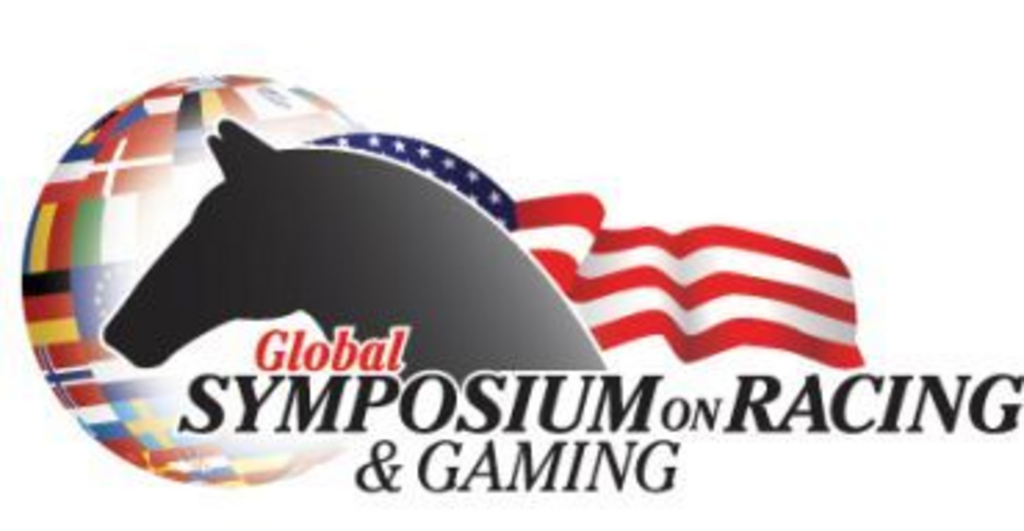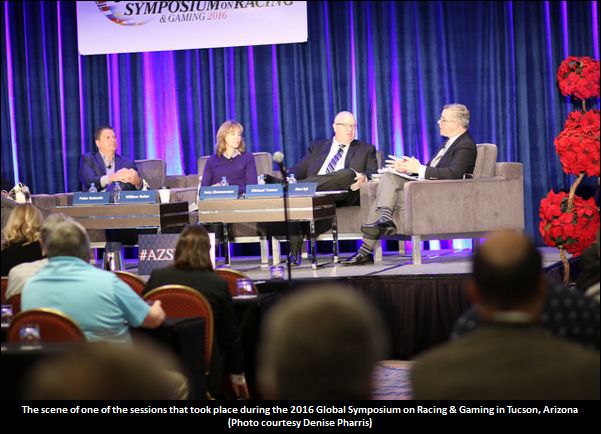
Two days of presentations of new ideas in racing wrapped up on Wednesday (December 7) in Tucson, Arizona, as the 43rd annual Global Symposium on Racing & Gaming concluded.
The event is sponsored by the Race Track Industry Program at the University of Arizona.
Innovation was showcased as speakers representing a variety of perspectives discussed how horse racing can embrace the future.
Walter Hessert, chief product officer of Derby Games, said that mobile activity is driving business growth, and said that his firm is introducing a new product called ‘Race Champ.’
He pointed out that five per cent of all Americans go to the races or bet on racing three or more times each year, and that there are 220,000 Americans betting races online.
Hessert also detailed the barriers to online betting, such as the cost, the wait between races, unfamiliar jargon, the requirement for a Social Security number, and others.
“Horse racing needs to find ways for customers to interact and be entertained online,” he said. “Racing needs a new way for people to play. If you search online for horse racing, you find just a bunch of low-budgets apps.”

Yenni Vance of Remington Park told symposium attendees, “If a track doesn’t have a clean, integrated strategy to engage customers, you’re going to fail.”
She dismissed claims that horse racing is dying, but stressed that racing has simply been slow to adopt mobile strategies.
“Mobile is a way of life now,” Vance said. “You need a fully branded, comprehensive marketing solution.”
She detailed the development of the ‘My Remington Park,’ an award-winning app.
“It gives customers everything they need at their fingertips,” Vance said.
Hai Ng, a partner in Neomancer LLC, shared his experiences with attendees on how racing can learn from gaming events that have broad appeal to millennials around the world.
A quartet of wagering experts spoke on Wednesday afternoon about what’s going on in their corners of the wagering world. The panel was titled ‘Making Wagering Great Again.’
Andrew Offerman, a graduate of the Race Track Industry Program and now director of racing operations at Canterbury Park, showed charts of how wagering and purses at the Minnesota track have increased in recent years.
He said that the track is able to draw large crowds, often as high as 20,000 people for special events.
Canterbury experimented with reduced takeout rates with mixed success, he pointed out. While wagering increased, the increases did not offset the reductions in takeout.
Klaus Ebner from the Woodbine Entertainment Group said, “Big fields are the key to driving wagering. Also, adjust your post times so that you don’t step on post times from major tracks. Don’t force your customers to decide which one to bet.”
Woodbine’s efforts to make wagering great include lowering both bet minimums and takeout. WEG has also pushed its multiple bets to entice bettors wanting to hit a big payoff.
David Haslett from Sky Racing World in Australia noted that wagering on racing is increasing in Australia while the US pari-mutuel is declining. He attributed the increases to providing customers with options, such as fixed odds wagering, flexible betting amounts, and allowing a customer to cash out early on a Pick 4 bet.
Bart Barden, the US director for Betfair, extolled the merits of exchange wagering in which some customers bet on horses to win and others bet on horses to lose. He said exchange wagering has proven effective in increasing customer engagement, and noted that it can increase betting churn.

Veterinarians Dianne Benson and Ron Jensen discussed the entire post-race testing process and explained why chain-of-custody in samples is so critical to maintaining integrity.
Dr. Benson, who is the executive director and chief operating officer of the Racing Medication and Testing Consortium, said, “There is diminished value in blood-only samples of numerous horses. It is better today to have paired (blood and urine) testing samples on fewer horses.”
Dr. Jensen, who works with the NTRA Safety & Integrity Alliance, explained how post-race testing procedures began in the 1930s with saliva swabs. That was later replaced with urine testing, and then blood testing became the preferred method.
“You need to eliminate the contamination of the post-race sample as much as possible,” Dr. Jensen stressed. “Every little detail is important to assure the integrity of the test barn procedures.”
Representatives of USFantasy explained their efforts to apply the pari-mutuel wagering concept to sports. It’s been launched in Nevada and USFantasy is hoping that it will develop in Colorado where initial results have been modest. Sports wagering is seen as a way to augment betting at the track or OTBs and ADWs.
(University of Arizona Race Track Industry Program)
Related Stories

